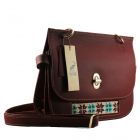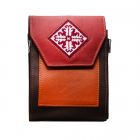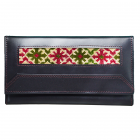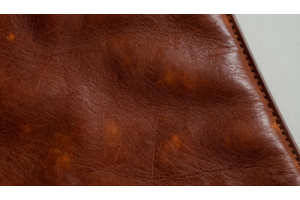Leather That Stands the Test of Time
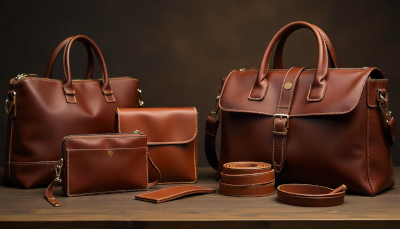
Leather That Stands the Test of Time
Leather has always been more than just a material — it’s a symbol of strength, craftsmanship, and timeless elegance. From classic wallets to durable travel bags, genuine leather products age beautifully, developing a unique patina that tells their own story. Unlike synthetic alternatives, real leather improves with use, offering durability, flexibility, and style that lasts for years. Choosing quality leather isn’t just about luxury — it’s about investing in something made to endure, evolve, and stay beautiful through time.
Table Of Content
- 1. Introduction – Leather That Stands the Test of Time
- 2. The Art of Timeless Craftsmanship
- 3. Why Genuine Leather Lasts Longer
- 4. Caring for Leather to Extend Its Life
- 5. Sustainable and Ethical Leather Production
- 6. Leather as a Long-Term Investment
- 7. Evolving Beauty: How Leather Ages Gracefully
- 8. Conclusion
- 9. FAQs: Leather That Stands the Test of Time
1.Introduction – Leather That Stands the Test of Time
Leather has long been admired for its unmatched durability, natural beauty, and timeless appeal. Unlike synthetic materials that fade, crack, or lose their shape, genuine leather grows richer and softer with age, developing a distinct patina that reflects its journey. Each mark and crease tells a story of quality and craftsmanship, making every piece unique. Beyond its aesthetic charm, leather is a material built to endure — resistant to wear, flexible yet strong, and capable of lasting for decades when properly cared for. Whether it’s a handcrafted wallet, a minimalist bag, or a pair of classic shoes, genuine leather embodies a perfect balance of functionality, elegance, and sustainability. Choosing leather is not just about style; it’s about investing in something that stands the test of time, a symbol of authenticity and enduring quality.
- Develops a unique patina that enhances with age.
- Resistant to wear, flexible, and long-lasting.
- Symbolizes quality craftsmanship and authenticity.
- Combines functionality, elegance, and sustainability.
- An investment that truly stands the test of time.
Tip
To keep your leather products looking beautiful for years, condition them regularly using a natural leather balm or cream. This helps retain their softness, prevents cracks, and enhances their natural shine — ensuring your leather truly stands the test of time.
2. The Art of Timeless Craftsmanship
True leather craftsmanship is an art form that blends tradition, precision, and passion. Each piece is carefully cut, stitched, and finished by skilled artisans who understand the unique character of every hide. This dedication to detail ensures that every product not only looks elegant but is built to last. Timeless craftsmanship values quality over quantity, focusing on handcrafting items that age gracefully and grow more beautiful with time. From selecting the finest full-grain leather to applying expert finishing techniques, artisans preserve the authenticity and soul of the material — creating pieces that embody both heritage and durability.
- Hand-Selected Leather: Only premium full-grain or top-grain leather is chosen for its strength, texture, and longevity.
- Precision Cutting: Every piece is carefully cut to maximize durability and minimize waste, preserving the leather's natural beauty.
- Expert Stitching: Skilled artisans use reinforced stitching techniques that prevent fraying and ensure long-lasting structural integrity.
- Thoughtful Design: Timeless designs are created to balance elegance, functionality, and practicality for everyday use.
- Finishing Techniques: Leather is treated with natural oils, dyes, and finishes that enhance its color, softness, and resistance to wear.
- Attention to Detail: Every seam, edge, and embellishment is inspected and refined to reflect superior craftsmanship.
- Durability Meets Aesthetics: The combination of quality materials and skilled workmanship results in leather products that age gracefully, gaining a unique patina and character over time.
3. Why Genuine Leather Lasts Longer
Genuine leather is celebrated for its exceptional durability, making it a preferred choice for items meant to last a lifetime. Unlike synthetic materials, which can crack, peel, or lose shape over time, real leather possesses a natural strength that allows it to endure daily use while maintaining its form and texture. Its unique fibrous structure provides flexibility without compromising toughness, enabling it to resist wear, scratches, and stretching. Additionally, leather naturally adapts to environmental conditions — it breathes, regulates moisture, and becomes softer and more comfortable with age. Investing in genuine leather means choosing a material that not only looks elegant and sophisticated but also stands the test of time, offering long-term value and lasting beauty.
- Natural Strength: The dense fiber structure gives leather exceptional durability and resistance to tearing.
- Flexibility and Comfort: Leather adapts to use, becoming softer and more comfortable without losing its shape.
- Resistance to Wear: Genuine leather withstands scratches, scuffs, and stretching better than synthetic alternatives.
- Breathable Material: Leather naturally regulates moisture and temperature, preventing cracking and stiffness.
- Long-Term Investment: High-quality leather items maintain their functionality and beauty for decades.
- Timeless Appearance: Leather develops a unique patina over time, enhancing its aesthetic appeal.
| Feature | Description |
|---|---|
| Natural Strength | The dense fiber structure gives leather exceptional durability and resistance to tearing. |
| Flexibility and Comfort | Leather adapts to use, becoming softer and more comfortable without losing its shape. |
| Resistance to Wear | Genuine leather withstands scratches, scuffs, and stretching better than synthetic alternatives. |
| Breathable Material | Leather naturally regulates moisture and temperature, preventing cracking and stiffness. |
| Long-Term Investment | High-quality leather items maintain their functionality and beauty for decades. |
| Timeless Appearance | Leather develops a unique patina over time, enhancing its aesthetic appeal. |
| Care Tip | Details |
|---|---|
| Regular Cleaning | Dust, dirt, and oils can accumulate on leather, causing it to look dull or degrade. Wipe gently with a soft, dry cloth at least once a week. For deeper cleaning, use a mild leather cleaner suitable for the type of leather. |
| Conditioning | Leather loses moisture over time, leading to stiffness or cracking. Apply a high-quality leather conditioner every few months to replenish oils and maintain flexibility. |
| Proper Storage | Store leather items in a cool, dry place away from direct sunlight, heat, or humidity. Use dust bags or soft cloth covers to protect from dust and scratches. |
| Protection from Moisture | Avoid heavy water exposure. If leather gets wet, gently pat dry with a soft cloth and air dry at room temperature. Never use direct heat sources like hair dryers. |
| Avoid Harsh Chemicals | Do not use alcohol, bleach, or strong detergents. Use only leather-specific cleaning products to maintain its natural oils and surface integrity. |
| Regular Use | Leather stays supple with consistent use. Rotate items such as bags or shoes to maintain shape and prevent stiffness. |
| Patina Development | Allow leather to age naturally. Minor scratches and marks add character, giving each piece a unique and rich patina over time. |
5. Sustainable and Ethical Leather Production
Sustainable and ethical leather production focuses on minimizing environmental impact while ensuring fair labor practices and high-quality craftsmanship. Traditional leather tanning and processing can involve chemicals and waste that harm ecosystems, but modern sustainable practices use vegetable tanning, water recycling, and eco-friendly dyes to reduce pollution. Ethical production also emphasizes responsible sourcing of hides, often using by-products from the food industry rather than raising animals solely for leather. Additionally, fair treatment of workers, safe working conditions, and community support are key aspects of ethical leather manufacturing. Choosing sustainably produced leather ensures that your products are not only durable and beautiful but also aligned with environmental responsibility and social accountability, making your investment truly meaningful.
- Eco-Friendly Tanning: Modern sustainable leather uses vegetable-based tanning instead of harmful chemicals, reducing pollution and preserving water quality.
- Responsible Sourcing: Hides are often sourced as by-products from the food industry, ensuring that animals are not raised solely for leather.
- Water and Waste Management: Advanced practices include recycling water and properly managing waste to minimize environmental impact.
- Use of Natural Dyes: Eco-friendly dyes replace synthetic chemicals, resulting in leather that is safer for both people and the environment.
- Fair Labor Practices: Ethical leather production ensures safe working conditions, fair wages, and respect for workers’ rights.
- Community Support: Many sustainable leather brands invest in local communities, offering training and support to artisans.
- Durability and Longevity: Ethical and sustainably produced leather maintains the same high quality and durability, ensuring products last for decades.
6.Leather as a Long-Term Investment
Investing in high-quality leather is not just a choice for style—it’s a decision for longevity and value. Unlike fast-fashion materials that wear out quickly, genuine leather products improve with time, developing a unique patina that adds character and charm. Durable craftsmanship ensures that bags, wallets, belts, and other accessories can last for decades, often becoming heirlooms passed down through generations. Choosing leather also means fewer replacements, reducing waste and saving money in the long run. Beyond practicality, leather represents an investment in quality, sustainability, and timeless elegance, proving that true style never fades and enduring materials always pay off.
- Durability: High-quality leather is designed to last for decades, resisting wear, tear, and daily use better than synthetic materials.
- Patina Development: Over time, leather develops a unique patina that enhances its appearance, making each piece more valuable and distinctive.
- Reduced Replacement Costs: Investing in durable leather means fewer replacements, saving money and reducing environmental impact over time.
- Timeless Style: Leather’s classic elegance never goes out of fashion, ensuring your investment remains stylish for years.
- Heirloom Quality: Well-crafted leather products can be passed down through generations, retaining both functionality and sentimental value.
- Sustainable Choice: Long-lasting leather contributes to less waste compared to frequently replaced synthetic items, aligning with eco-friendly practices.
- Overall Value: Combining durability, aesthetics, and sustainability, leather offers unmatched long-term value for conscious consumers.
7.Evolving Beauty: How Leather Ages Gracefully
One of the most remarkable qualities of leather is its ability to age with grace, transforming over time into a material with unique character and charm. Unlike synthetic alternatives that deteriorate, leather develops a rich patina—a subtle sheen, color variation, and texture that reflects its history of use. Scratches, creases, and minor marks become part of its story, enhancing its individuality rather than detracting from its beauty. This natural aging process not only adds aesthetic appeal but also highlights the quality and durability of the material. By choosing leather, you invest in items that grow more elegant and personalized with every year, combining functionality, style, and a timeless narrative that evolves alongside the owner.
- Patina Development: Over time, leather develops a natural sheen and color variation, enhancing its visual appeal and uniqueness.
- Character from Use: Minor scratches, creases, and marks tell the story of everyday use, giving each item a distinct personality.
- Softening and Flexibility: Leather becomes softer and more supple with age, improving comfort and usability without losing strength.
- Timeless Aesthetic: The evolving beauty of leather ensures that items remain stylish and elegant for decades.
- Enhanced Value: Well-aged leather often gains sentimental and monetary value, especially in high-quality, handcrafted pieces.
- Durability Over Time: Leather’s natural aging process demonstrates its resilience, proving that quality materials endure.
- Personal Connection: As leather ages, it develops a character unique to its owner, creating a deeper personal attachment to the item.
8. conclusion
Leather is more than just a material; it is a lasting investment in quality, style, and sustainability. Its natural durability, ability to develop a unique patina, and timeless elegance make it stand apart from synthetic alternatives. From handcrafted wallets and bags to belts and jackets, leather products combine functionality, aesthetic appeal, and longevity, often becoming cherished heirlooms over time. Proper care and maintenance, along with choosing ethically and sustainably produced leather, ensure that each piece remains beautiful and resilient for decades. Ultimately, investing in genuine leather is not just a choice for today—it’s a commitment to enduring craftsmanship, elegance, and value that truly stands the test of time.
FAQs
1. What makes leather stand the test of time?
High-quality leather has a natural strength and flexibility, combined with skilled craftsmanship, which ensures durability, resilience, and long-lasting appeal.
2. How do I care for leather to make it last longer?
Regular cleaning with a soft cloth, conditioning to maintain moisture, proper storage, and protecting it from excessive heat or water help extend leather’s lifespan.
3. Does leather change over time?
Yes. Genuine leather develops a natural patina over time, enhancing its appearance and giving each item a unique character and charm.
4. What types of leather are best for long-term use?
Full-grain and top-grain leathers are the most durable, maintaining strength, texture, and beauty over decades compared to lower-quality or bonded leathers.
5. Is leather a sustainable choice?
Sustainably produced leather uses eco-friendly tanning, responsibly sourced hides, and long-lasting craftsmanship, reducing waste compared to fast-fashion materials.
6. How does leather age gracefully?
Leather naturally softens and develops a unique patina with use, making scratches, creases, and minor marks part of its evolving beauty and individuality.
7. Can leather withstand everyday wear and tear?
Yes. Properly made leather is highly resistant to stretching, scratching, and general wear, making it ideal for daily use and long-term investment.
8. How should leather be stored to maintain its quality?
Store leather items in a cool, dry place away from direct sunlight or heat sources, and use dust bags or covers to prevent scratches and environmental damage.
9. Is leather worth the investment?
Yes. Its durability, timeless style, ability to develop character over time, and sustainability make leather a smart long-term investment.
10. Can leather items be used for both casual and formal occasions?
Absolutely. Leather’s classic elegance and versatility make it suitable for everyday wear, professional settings, and special occasions alike.


